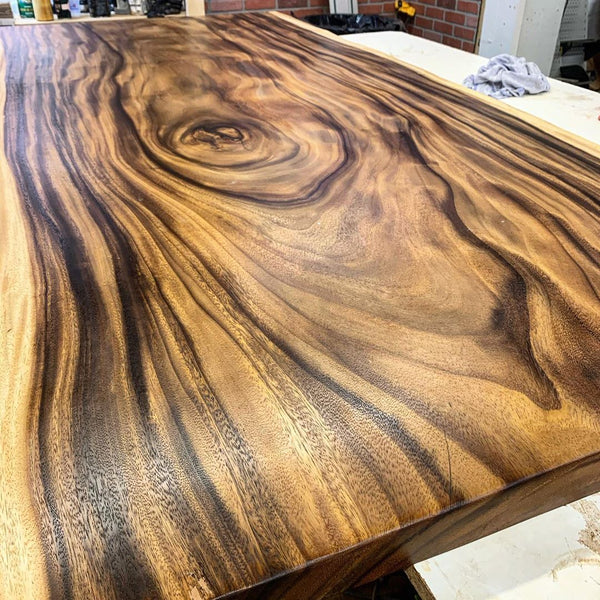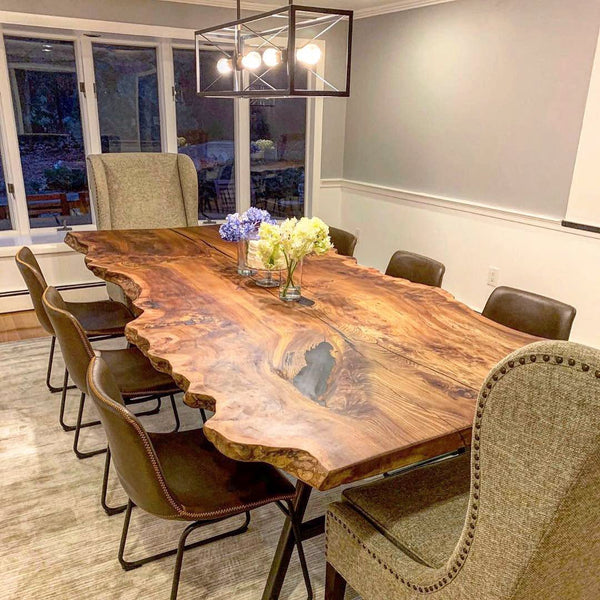
Why Does Solid Wood Furniture Cost More?
Why Does Solid Wood Furniture Cost More?
While it certainly isn’t hard to find inexpensive wooden furniture on the market today, it is almost impossible to find cheap solid wood furniture – and for good reason!
High-quality wooden furniture that uses solid wood construction materials almost always carry a premium price tag compared to options that are made from particleboard, MDF, plywood, or use a lot of veneers.
Below we dig a little bit deeper into the reasoning behind these pricing decisions so that you understand why solid wood furniture commands such a high price point (and why it’s almost always worth the investment).
Let’s get right into it!
Three Main Types of Wood Used in Furniture Construction
Right out of the gate, there are really three types of wooden construction materials used in the world of furniture.
Solid Wood
To begin with, you have your solid wood construction materials.
These are the wooden construction materials you probably think of when you think of well-made furniture, the kind of construction materials that come in thick slabs or cutdown boards, a natural resource that’s as close to the trees they were harvested from as you can get.
Hardwood options (oak, cherry, maple, walnut, etc.) and softwood options (pine, poplar, rubber wood, etc.) can be turned into great pieces of furniture, though you’ll usually find hardwood pieces in more expensive and “luxury” furniture options.

Particle Board and MDF
Both particleboard and Medium Density Fiberboard (MDF) are essentially engineered wood products that are made from the scraps left behind from milling hardwood and softwood construction materials.
Basically a bunch of woodchips from hardwood materials are mixed with glues and resins, compressed under a tremendous amount of pressure, and given time to bind and cement together.
Considerably less expensive than traditional solid wood construction materials (and quite a bit less expensive than plywood options most of the time, too), this is what your IKEA furniture nine times out of ten.
Plywood
Plywood is also in engineered wood construction material, but this one in particular is made up of multiple layers of wood that are glued together in patterns that shift with each layer.
Available in both hardwood and softwood plywood varieties (and a whole host of different grades, from construction grade all the way up to furniture grade and everything in between), plywood can be turned into gorgeous pieces of furniture – especially when combined with solid wood construction components.
The biggest benefit here is that you can curve and shape plywood in a way that would be impossible with solid wood materials. The Eames lounge chair, for example, something that wouldn’t have any of the strength, durability, or elegance that has made it such an iconic piece of furniture if it was made from solid wood alone.
Jointed Construction Guarantees a Better Fit and Finish
Because solid wood construction materials haven’t been engineered or made from the scraps of other components that they are considerably more expensive, especially when you start to talk about larger dimensions – the kinds you’ll need to build tables, bookcases, desks, and more (for example).
On top of that, though, the method for constructing solid wood furniture almost always demands a jointed construction approach that’s quite a bit more labor-intensive and a bit more involved than simply screwing everything together and calling it a day.
Sure, a lot of great pieces of modern solid wood furniture will use modern mechanical fasteners. But almost all of these pieces are also going to feature dovetail joints as well as mortise and tenon joints (to name a few) that demand a craftsman’s careful hand and the know-how to plan out and pull off these joints to perfection.
The big benefit here, of course, is that jointed construction guarantees a much better fit, a much better finish, and a lifetime (and then some) of longevity and durability when pulled off correctly.
Dovetail and mortise and tenon joints can last forever and a day, especially when combined with just a little bit of wood glue – all while enjoying incredible strength that even some of the best mechanical fasteners cannot provide.
Add in the fact that solid wood construction material has to be finished quite carefully (sanded, stained, and sealed) and it should come as no surprise that this labor-intensive work commands such a higher price tag.

Timeless Designs Were Created with Solid Wood in Mind
At the end of the day, of course, a lot of the most iconic and timeless furniture designs ever conceived of were created in a time where mass production and “assembly-line” approaches weren’t even a consideration.
These designs have been able to stand the test of time in large part because of the use of solid wood construction materials and that continue to hold up decade after decade, generation after generation.
Sure, modern furniture designs that take advantage of particleboard and MDF can look great as well – IKEA has made a small fortune making these kinds of pieces, for example – but there’s just something classic and classy about solid wood construction that you just can’t get with particleboard or plywood.
Add in the fact that you know you’re going to be able to hand down a beautiful piece of solid wood furniture to your loved ones so that they can enjoy it for a lifetime after you already have is another piece of the puzzle behind why these furniture options are investments more than anything else.
Spending a little bit extra on a solid wood table and chair set that will last forever compared to saving a buck or two on a particleboard option that a fall apart as fast as your sneakers is always going to be a savvy decision.

Post a Comment!